Saturday, February 21, 2004
Silvered Æ antoninianus, Gallienus, Antioch, Göbl 1635c
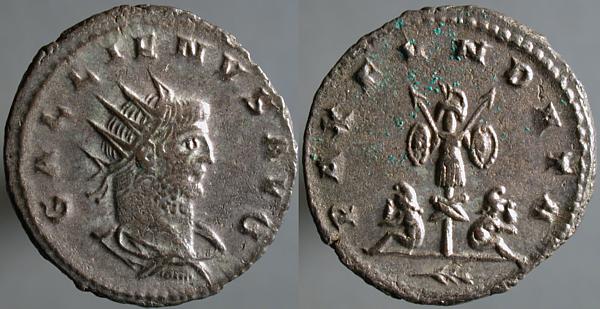
GALLIENVS AVG, Radiate draped cuirassed bust right | PAX FVNDATA, Two Parthian captives seated at the foot of a trophy, their arms tied behind their backs. Branch in exergue.
The peace they had in mind here was likely more of the "make a wilderness" sort than the Kofi Annan sort, though no less fantastic than the latter: the Romans never did make a big dent in the Parthians. We know the captives are Parthian because of their funny hats.
Friday, February 20, 2004
Æ25, Ephesus in Ionia, Valerian, SNG Cop 505
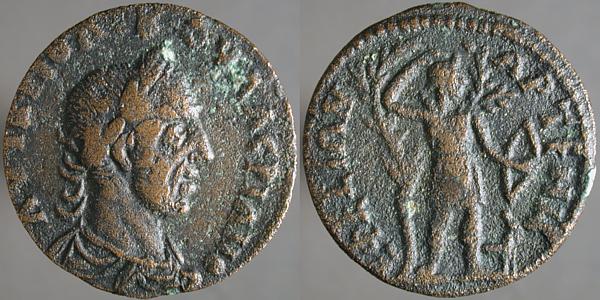
ΑΥΤ Κ ΠΟ ΛΙΚ ΟVΑΛΕΡΙΑΝΟC, Laureate draped cuirassed bust right | ΕΦΕCΙΑΝ ΑΡΤΕΜΙC, Artemis standing facing, head right, holding bow right, drawing arrow from quiver left. Tree behind, hound at feet right.
Generally similar to Tuesday's coin, but for the tree behind Artemis, still the execution is quite different.
Thursday, February 19, 2004
Silvered Æ antoninianus, Gallienus, Cyzikus, Göbl 1529Bb
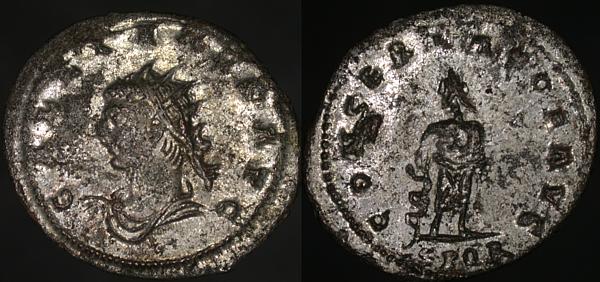
GALLIENVS AVG, Radiate draped cuirassed bust left, one pellet beneath | CONSERVATOR AVG, Aesculapius standing left holding a rod around which a serpent is entwined. SPQR in exergue.
I've added a Nikon Cool-Light SL-1 to the kit and am just learning how to use it this week. I'm still trying to find what's best yet for a coin with a dark glossy patina, but right out of the box it yields very good results supressing glare on coins like this with very relective silvered surfaces.
Wednesday, February 18, 2004
Silvered Æ 1, Julian II, Heraclea, RIC 104

D N IVLI_ANUS P F AVG, Diademed draped cuirassed bust right | SECVRITAS REIPVB, Bull standing right, two stars above, HERACLA in exergue.
These big coins of Julian are quite popular, partly because of Julian's appeal as the last unquestionably pagan emperor of Rome, and the pagan theme of the reverse. The quality of the surface silvering was not good, and it's rarely as visible as it is on this example, from the first officina at Heraclea (formerly Perinthus, currently Marmara Ereglisi, Turkey.)
Image hosting for this entry provided by www.ancients.info, which offers free web hosting for non-commercial ancient coin sites. I maintain a small site there, including a few of these coins from different mints.
Tuesday, February 17, 2004
Æ25, Ephesus in Ionia, Gallienus, SNG Cop 513
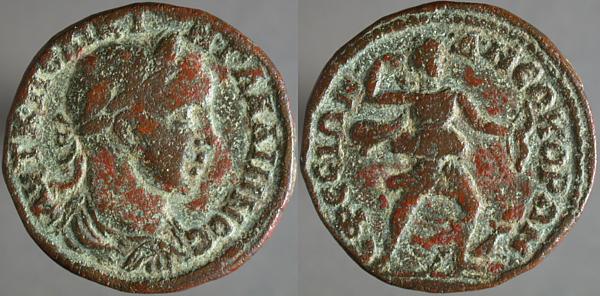
ΑΥΤ Κ· ΠΟ ΛΙΚΙ_Ν· ΓΑΛΛΙΗΝΟC, Laureate draped cuirassed bust right | ΕΦΕCΙΩΝ_·Δ· ΝΕΩΚΟΡΩΝ, Artemis advancing right, holding bow and drawing arrow from quiver, hound running at feet.
Artemis, twin sister of Apollo, was a special favorite at Ephesus, their protectress. Her temple there was one of the seven wonders of the world.
Monday, February 16, 2004
Billon antoninianus, Valerian, Rome, Göbl 44d
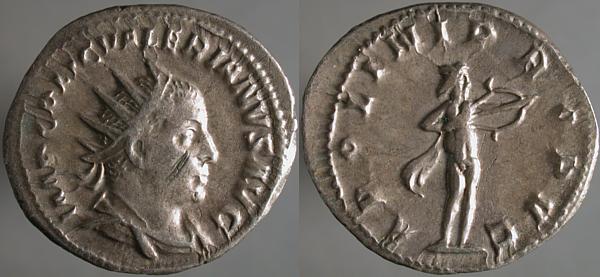
IMP C P LIC VALERIANVS AVG, Radiate draped cuirassed bust right | APOLINI PROPVG, Apollo standing right with drawn bow.
By the end of Valerian's reign the silver coins had declined to a billon that was clearly not silver, and it declined further under Gallienus to bronze coins with a surface wash of silver, achieved by means that are still the source of some disagreement.
This, from early in the joint reign, has the appearance of good silver, though it's probably no more than 40% of the alloy.
Sunday, February 15, 2004
Æ21, Alexandria Troas, Gallienus, BMC Greek 182var
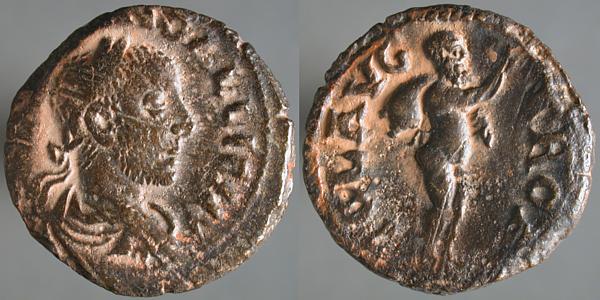
[?] GALLIENV, Laureate draped bust right | COL AVG TROA, Marsyas standing right, carrying wineskin over shoulder and holding cup high, right.
As mentioned yesterday, the satyr Marsyas came to a bad end. Portrayed here in happier times, he's often shown on coins carrying a wineskin. In some versions of the story, his flayed skin is made into a wineskin.
And with that, let's give Alexandria Troas a rest for a while.

